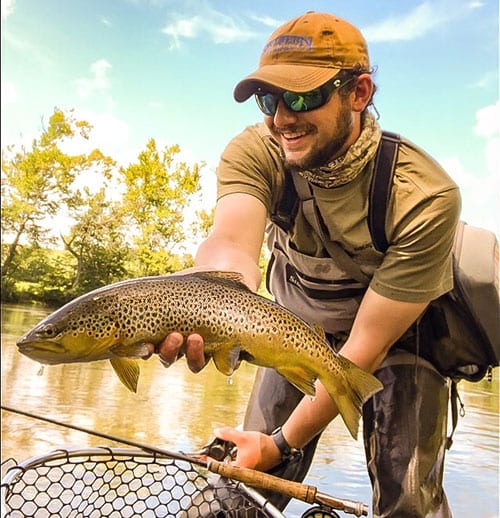
By Ethan Hollifield
When it comes to fly selection; there’s an infinite amount of possibilities. Looking through the bins in a fly shop or spending enough time on the vice will quickly show you how many endless material choices, color combinations, and overall varieties of what otherwise are simple patterns, can be accumulated by your average fly angler. I’ve seen anglers on the water that bring with them over ten fly boxes stuffed in every free pocket to try and accommodate the vast amount of patterns available on the market in hopes that maybe “the” fly of the day is one of those hundreds of flies. Guiding taught me very quickly that carrying an ungodly amount of flies and changing patterns every other drift is the most ineffective way to fly fish that has ever been conceived. The lesson I would like for readers to take away from this is to develop a sense of confidence in how they fish rather than relying on carrying hundreds of flies hoping that one might work. The “hope” factor is something I cannot rely on as a guide; I have to know that something I’m tying on for my clients is going to produce. This is how I developed this system. I’ll go over some tips and what I look for on the water or at the tying vice that helps me determine my fly selection.
Starting off with the number of flies themselves: I only carry three boxes on the water with me while I guide (all double sided). One box contains dry flies, the other nymphs, and the other contains a selection of streamers. Within these boxes are what I call my “confidence” flies. These are flies that will produce a fish 90% of the time in 90% of the water conditions you’ll face on the water. If you look in any of my dry fly or nymph boxes, you’ll see essentially 4 of the same types of flies: a pheasant tail, a hares ear, a zebra midge, and a parachute adams. I organize these patterns by size, color, and weight distribution as well as whether a fly has additional notations added to it such as rubber legs or elements of flash. My streamer box carries a selection of flies that either perform as a jig fly or flies that will move with an erratic action in the water: my two favorites being the bunny clouser or either a single hook/articulated zoo cougar. I carry a wide variety of colors and sizes to meet water conditions, as I need them.
Now, why only limit myself to having specifically these types of fly patterns on the water? The method behind my reasoning is what drives trout to feed in most circumstances: opportunity. A trout’s feeding habits on any given freestone stream is relatively consistent. They are going to intercept, in the current, what is available to them at a given time. This could be smaller mayflies or midges in the winter to large golden stoneflies in the summer. Either way, a pheasant tail variation to meet both the size and color of any of these insects is a hard pattern to beat, and the reason for that is simple and outweighs our understandings of trout behavior. This being presentation over fly pattern. This is the golden rule I tell all my clients to abide by. You can have the fanciest, most well tied flies ever conceived but they will mean nothing unless you can fish them correctly.
So, rather than carrying every fly pattern known to man on your next outing: equip yourself with only a small selection of flies and focus more on applying correct presentations. You’ll be amazed at how much your catch rate, and your confidence will grow.
Ethan Hollifield is an Environmental/Physical Science Teacher and is also a guide for Southern Appalachian Anglers.